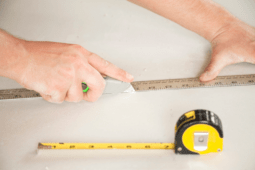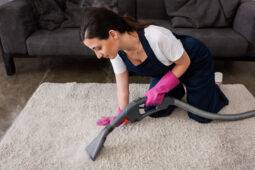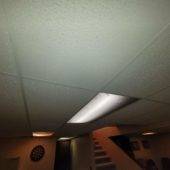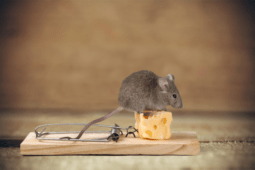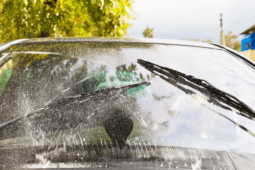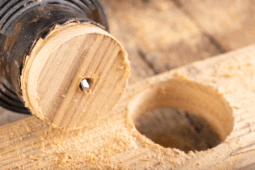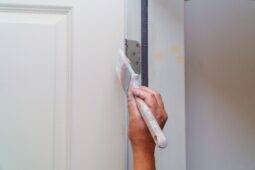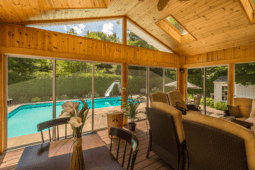ManMade Essential Toolbox: You Need a Quality Soldering Kit. Which One’s Right for Your Project?
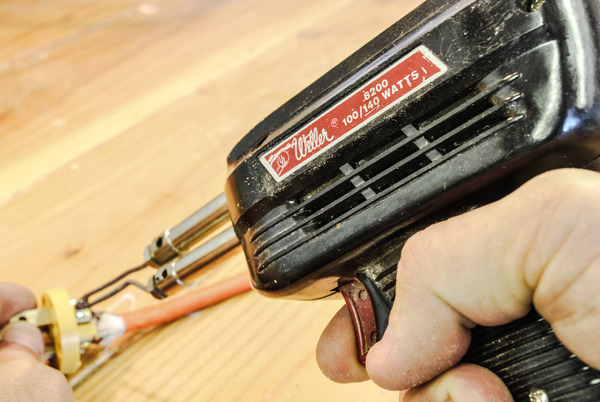 When most people think of joining metal parts, a big bulky welder comes to mind. But what about the jobs where something more precise is needed? You need a soldering kit. Here’s a look at what kind is right for your project.
When most people think of joining metal parts, a big bulky welder comes to mind. But what about the jobs where something more precise is needed? You need a soldering kit. Here’s a look at what kind is right for your project.
We all come across the need to join soft metals in the shop. Whether it’s a copper plumbing joint or a loose appliance wire, there’s a soldering kit for that. Soldering is used for plumbing, electrical connections, thin metal joints for flashing or stained glass work and also jewelry. Technically, there are three types of soldering – Soft soldering, silver soldering and brazing. In all methods, heat is applied to the metal parts which melts the softer filler metal and joins the pieces together. The type and use of the joint is what determines the method used. All methods use a flux material which cleans and protects the metal from oxidizing while being heated, and heat to melt a filler metal that flows into the gap and joins the pieces together. So here’s a quick run-down on the different applications of soldering and which to choose for you project: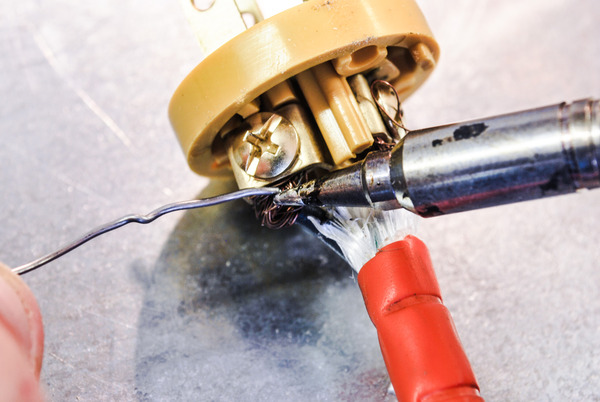
Soft Soldering – This method is for projects where a soldering iron can be used to heat the metal, which is up to about 752f degrees. Soft solder is not strong enough to be used for structural pieces or anything that will be under stress, but the lower melting temperature is perfect for electrical connections where surrounding components can be damaged by high heat. Use this method to repair loose or broken electrical wire connections in electric devices or appliances (note- be safe when repairing any electrical appliances or tools. Only perform repairs if you are properly informed on the safety hazards of the job and always have a pro look at your work). This method heats the filler metal and once it reaches a liquid state it flows into the gap in the joint through gravity. There are two types of tools for soft soldering, the soldering gun and the soldering iron.
-
Soldering Iron – The iron is a small, affordable and very precise tool that looks like a long screwdriver with a cord. This tool is for tight work where visibility of the work is important. The small coil in the tool heats up slowly, and cools down fast so this is good for focused work but will fall short if used for a large repair or multiple joints. There is also a butane version available for portability, but expect longer heat-up times and a bit more hassle with the heat exhaust singing fingertips or plastic parts. Multiple tips are available for specialized work, or even minor wood burning.
-
Soldering Gun – The gun is a much larger and robust tool good for large repairs or multiple joints. While it is much less of a precise tool, the large coil heats fast and maintains that heat for long periods. Multiple tips are available, but don’t expect to get any that match the control of the smaller iron.
When working with precision joints, a few tools are invaluable. Consider these if you’ll be working small:
-
Precision Screwdriver Set – These super small screwdrivers will help you get to the repair with less headaches. There are almost always a few strange screws that need a special touch to get loose, and those small screws can be stripped easily with the wrong tool so be safe and get a kit. Bonus, they also work well on sunglasses and watch batteries.
-
Detail Work Magnifying Glass – This small tool holds a magnifying glass at the right angle to see everything a bit clearer. They also have a set of alligator clips that and act as a second set of hands to hold the pieces in place while you solder them.
ManMade Recommended:
- Mudder 60w Adjustable Temperature Soldering Iron Kit $16
- Dremel Versa Flame Butane Micro-Torch $35
- Apex Professional Soldering Gun Kit $45
- Maxtech Precision Secrewdriver Set $9
- SE Helping Hand Magnifying Glass $6
Silver Soldering – This type of soldering is used to make jewelry and other related items which need a strong joint that doesn’t have a gap to fill. This means that the metals must be essentially flush so the silver solder can be absorbed by the surrounding metals. This precise joinery is need when the joints should be indiscernible from the rest of the metal, but is very specialized. If you plan on heading into this type of project be sure to read up on the proper materials for the specific joints. Plan on needing a very precise torch for this type of work with a burning temperature of about 1400f degrees or so. Check out this tutorial for more information on soldering jewelry.
ManMade Recommended:
 Brazing – Brazing is still a type of soldering, and it is generally used to describe soldering at higher temperatures with a flame. This method is used in plumbing or other large metal joints where the material dissipates the temperature much faster than a soldering iron or gun can keep up with. This method heats the metals to be joined, and the filler metal flows into the gap through capillary action instead of gravity. Use of a handheld torch burning propane or MAP-Pro fuel is the preferred method of heating the joint. Take a look at our Blow-Torch Article for more details on handheld torches.
Brazing – Brazing is still a type of soldering, and it is generally used to describe soldering at higher temperatures with a flame. This method is used in plumbing or other large metal joints where the material dissipates the temperature much faster than a soldering iron or gun can keep up with. This method heats the metals to be joined, and the filler metal flows into the gap through capillary action instead of gravity. Use of a handheld torch burning propane or MAP-Pro fuel is the preferred method of heating the joint. Take a look at our Blow-Torch Article for more details on handheld torches.
(Note – be sure to keep an eye on surrounding materials that may be sensitive to heat like studs, drywall or wiring. If in doubt, use a heat shield to protect them).
ManMade Recommended:
So no matter what type of soft metal you need to join together, there’s a method and tool that will make the job a DIY success.

